Clematis "Yulka": description of the variety, planting and care rules
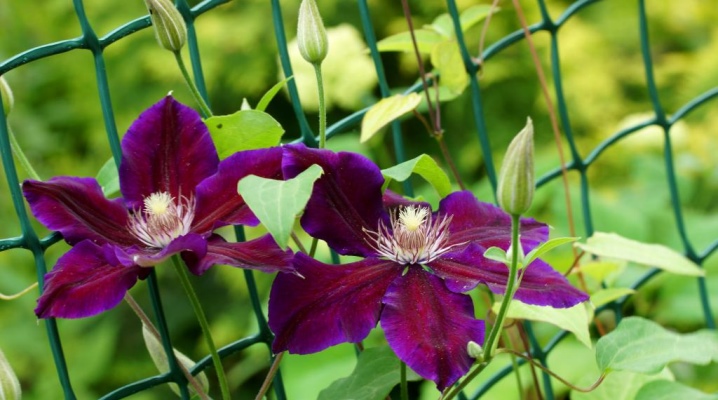
"Yulka" is one of the most beautiful clematis, intended for vertical gardening and decoration of garden areas. This luxurious vine is ideal for small areas. However, when growing an ornamental plant, it is important to understand how the planting and care of the crop should be carried out.
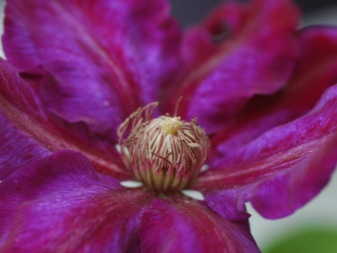
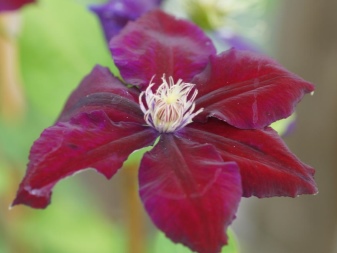
Features of the variety
Clematis "Yulka" is a profusely flowering herbaceous vine, a variety bred by Polish breeders and for its extraordinary beauty and useful characteristics in 2002 was awarded a silver medal at an exhibition in Holland. Here is a description of the variety.
- An ornamental climbing plant has a rich purple sepals. Inside, along the entire oval of the petals, there is a dark orange-red shade of pomegranate.
- The silvery stamens stand out against this deep background and seem to radiate radiance.
- The flowers are large, their diameter is 20 cm, during flowering clematis spreads a unique aroma.
- The culture does not tolerate open sunny places, but it feels great if placed on the western, eastern and even northern sides.
- Vines bloom all summer long and ends in August.
- Like all clematis, "Yulka" is immune to low temperatures and tolerates winter well.

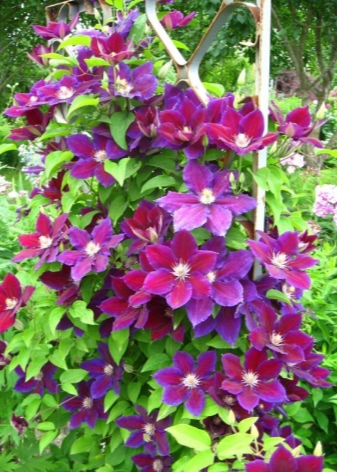
The plant is able to create delightful compositions in combination with any large plants of a different color, white, yellow, pale pink. Most often, climbing roses and dahlias are used for this. Thanks to its flexible stems, "Yulka" can become an element of decor for columns, arches, all kinds of awnings and pergolas.
Liana can easily cover any shrub or tree, if necessary.
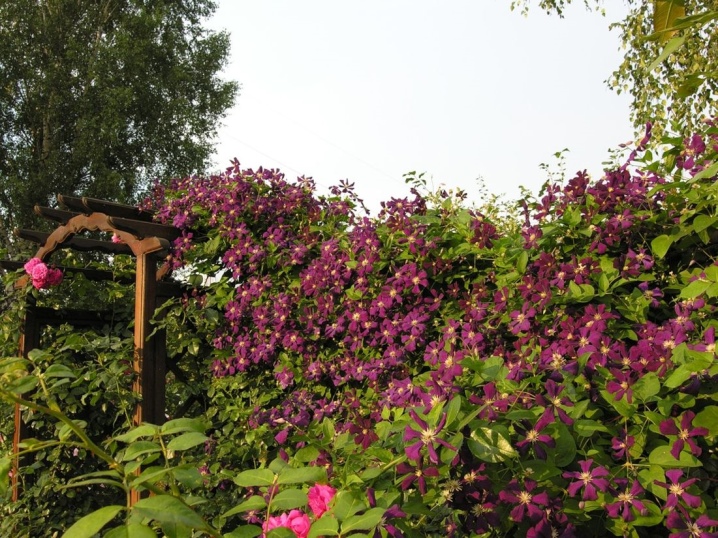
How to plant correctly?
For planting, you can use cuttings cut at the time of bud formation. At first, they are kept in a growth stimulant solution, after the formation of the roots, they are planted in well-drained soil. It should be borne in mind that not all plants will be able to take root in this case. You can also get new clematis by dividing - an adult mother bush is cut into several parts with a garden shovel and planted.
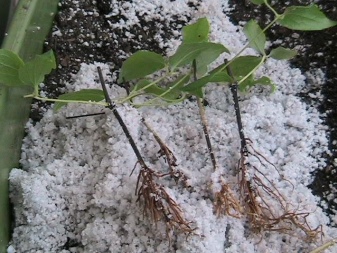

The best option for self-propagation is to use layering. It is much easier and also guarantees rooting. When the branches spread along the ground, they must be placed in a container with peat. The roots appear literally in a month, and then the seedling can be separated from the old plant. The seed method is used for further breeding of clematis, therefore it is almost never used by gardeners.
If you do not want to be engaged in breeding, it makes sense to purchase a seedling in special horticultural farms. Usually the root is packed in a bag of peat and can be planted right away.
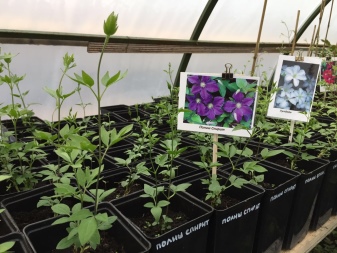

When planting, consider:
- a day clematis needs up to 6 hours of intense lighting;
- the plant must be protected from wind gusts;
- groundwater when disembarking in open ground should run above 1 m;
- in the southern regions, the plant is planted in partial shade, in order to avoid their death;
- if it is necessary to plant a vine along the wall, an indent of 40-50 cm is required - this will prevent the erosion of the root system by rainwater flowing from the roof.

The landing is carried out as follows.
- Previously, a hole is dug with a diameter of 0.5 m and a depth of 0.5 m, if the soil is light, with loamy soil, a deeper and wider hole (0.7x0.7 m) is required.
- Drainage is laid in it, consisting of crushed stone and pebbles 15 cm thick.
- The soil substrate is prepared from garden soil mixed with humus, wood ash with the addition of Nitrofoska and Superphosphate.
- The optimum acidity is pH 5.6–6.5. Too acidic soil is diluted with slaked lime.
- 5-6 days before disembarkation, 25 liters of settled water are poured into the pit.
- It is necessary to plant a crop in cloudy, preferably humid weather.
- The seedling is placed on a mound of soil, its roots are straightened and covered with loose earth, slightly compacting it. The root collar is immersed 10 cm below the soil surface, thus, the buds will be protected from freezing.
- A distance of 70 cm is observed between the plants.
- After watering, the trunk circle is mulched with humus or compost.
Clematis can be planted in open ground in autumn and spring. Container seedlings - anytime.

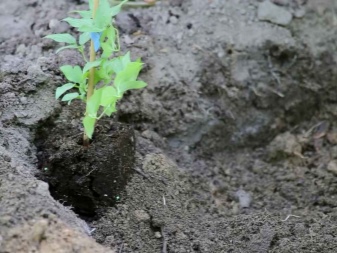
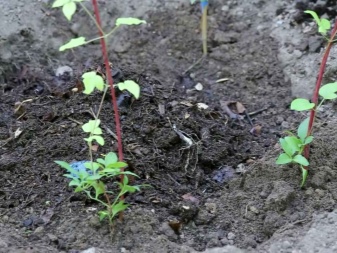
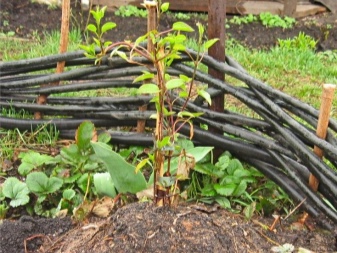
Further care
Cultivation of clematis "Yulka" provides for the implementation of basic care procedures.
Irrigation
Young seedlings should be watered regularly - once a week so that the ground is moistened 50 cm deep. For mature plants, the depth is 80-90 cm. After drying, it is important to loosen the soil in order for the roots to breathe. In the heat, watering is increased up to 3 times in 7 days. An adult liana needs at least 4-5 buckets of water.
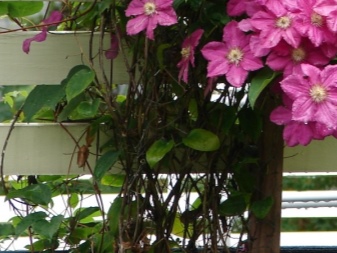
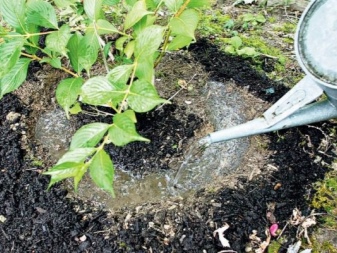
Fertilization
After planting for 2-3 years, the plants do not disturb, they have enough nutrients embedded in the soil during planting. Then, during the growing season, clematis is fed 1 time in 15 days: in the spring - with nitrogen compounds, and with potassium and phosphorus during the formation of flowers and until the end of summer. At different times, the vine must be fertilized with organic additives - chicken dung, urea. In the last days of August, wood ash is added to the soil (2 glasses for each bush).
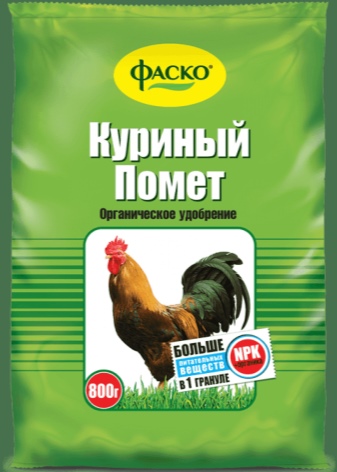
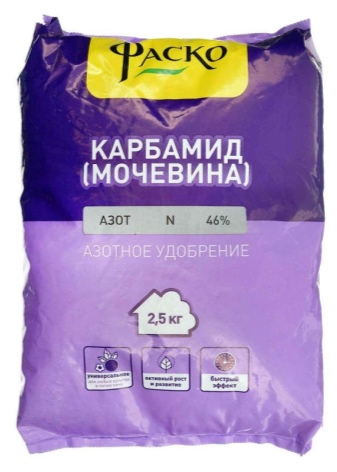
Pruning
Clematis "Yulka" belongs to the 2nd pruning group, therefore it is imperative to remove old shoots with seedlings after the first flowering. This is necessary for the abundant appearance of flowers in the future. Before winter, the bushes are cut off, leaving 50-100 cm of shoot height. To do this, the plant is removed from the support structure, dry and diseased branches are removed, and healthy shoots are shortened. Despite the winter hardiness, it is customary to cover clematis during the winter.
It is also important to regularly tie up the vine so that it is evenly distributed over the support. Proper planting and regular maintenance ensures the splendor of clematis and its vigorous flowering for a long period.
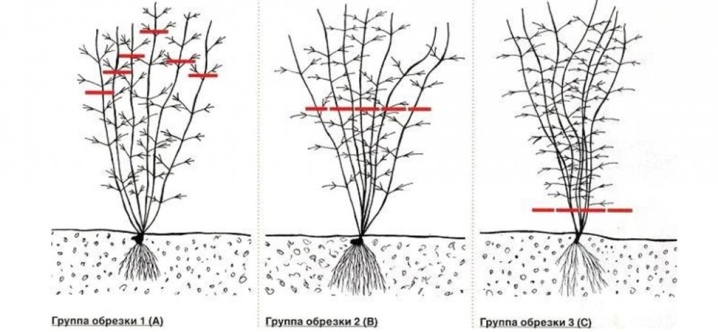
For the features of clematis care, see below.







































































































The comment was sent successfully.